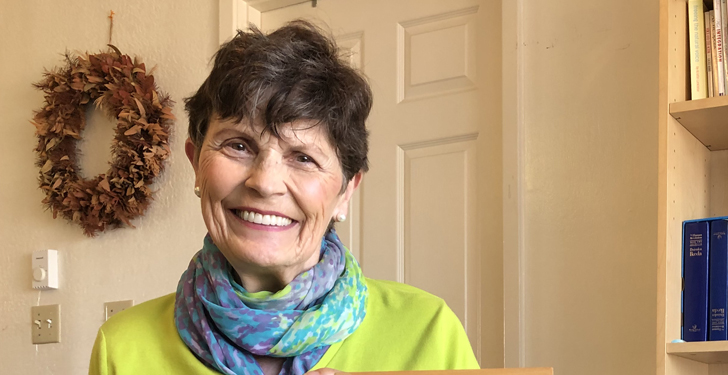by Kay Rood
San Francisco
Something uncommon also occurs when an ordinary person attains Buddhahood. At such a time, the three obstacles and four devils will invariably appear, and the wise will rejoice while the foolish will retreat. (“The Three Obstacles and Four Devils,” The Writings of Nichiren Daishonin, vol. 1, p. 637)
I joined the Soka Gakkai in January 1966, five years and three months after Ikeda Sensei’s first visit to America, thanks to the pioneer members who shared Buddhism without hesitation. I witnessed their seriousness toward developing the kosen-rufu movement in America in the way they chanted wholeheartedly, “praying as earnestly as though to produce fire from damp wood, or to obtain water from parched ground.”[1] Sure enough, little by little, people began to join the practice.
In 1966, while there weren’t a lot of us, there was no question that, if we wanted to change our problems, we should share Buddhism with others, which we did daily. In this time of construction, I would run home from work, pick up my son, grab something to eat (ramen was the cheapest and fastest to fix) and set off for an evening of Buddhist activities.
Early on, Sensei encouraged the members to find a passage from Nichiren Daishonin’s writings to live by. Mine was from “The Three Obstacles and Four Devils,” where Nichiren Daishonin explains to one of the Ikegami brothers that obstacles will arise in succession, and “the wise will rejoice while the foolish will retreat.”[2]
From the beginning of my practice I had plenty of obstacles to apply this passage to, including serious relationship problems and my own struggles with self-worth. Six months into my practice, my biggest obstacle came when I wrote my parents to share how happy I’d become through my Buddhist practice and received a letter of disownment, signed and notarized! I was shocked, but not spitefully angry. I stayed the course and turned my problems around, one by one. In fact, they all became treasured diamonds in my life that I now use to encourage others.
One of my most unforgettable experiences began three years into my practice, when I began chanting for Sensei to someday visit my home. I had not met him yet, but I began writing him to express my determination and share brief reports about my life and activities.
About 11 years later, Sensei asked to visit my home on Oct. 6, 1980, during a trip to San Francisco. I knew he wanted to visit all the members, and I felt honored to be their representative.
During his visit, I asked for guidance about conflicts. He told me that if I faced a conflict squarely by chanting Nam-myoho-renge-kyo resolutely to the Gohonzon, I would find a solution. He said that it was a difficult concept to put into practice, but that since conflicts are a natural part of life, I should strive to “employ the strategy of the Lotus Sutra before any other.”[3]
Sensei also took time to acknowledge my children, Robert, 13, and George, 2, creating an unforgettable memory with them. Every year since then, I have sent him a card and photo of our family on the anniversary of his visit.
When Sensei returned to San Francisco in March 1993, he reunited with my family and warmly encouraged us. Both my sons are now responsible and respected men, of whom I am very proud, with families of their own.
In terms of my own parents, I continued chanting to have dialogue with them, and I persisted in sending them letters, updating them on my life. When they allowed me to visit them again, I requested that they give me 10 minutes to explain the principles of Buddhism. This 10-minute presentation became a tradition with each visit.
After many years, they expressed how happy and grateful they were to have me as their daughter, and were understanding of my Buddhist practice. My father lived to 97 and my mother 99! Thinking back, I believe their disownment fueled my determination to continue practicing and show undeniable actual proof. It took 48 years for me to understand that benefit, which I realized a year after my mother’s passing.
Watching the thousands of beautiful youth at the World Youth General Meeting (on Sept. 27) stand up to carry the baton of kosen-rufu from our mentor, I have so much hope for the future of humanity. I am determined to live with good health and longevity toward 2030, supporting our youth until the end of my life, alongside Sensei. This is my vow.
References
- “Rebuking Slander of the Law,” The Writings of Nichiren Daishonin, vol. 1, p. 444.
- “The Three Obstacles and Four Devils,” WND-1, 637.
- “The Strategy of the Lotus Sutra,” WND-1, 1001. Employing this strategy means to always make our Buddhist faith and practice the foundation of our actions.
You are reading {{ meterCount }} of {{ meterMax }} free premium articles

